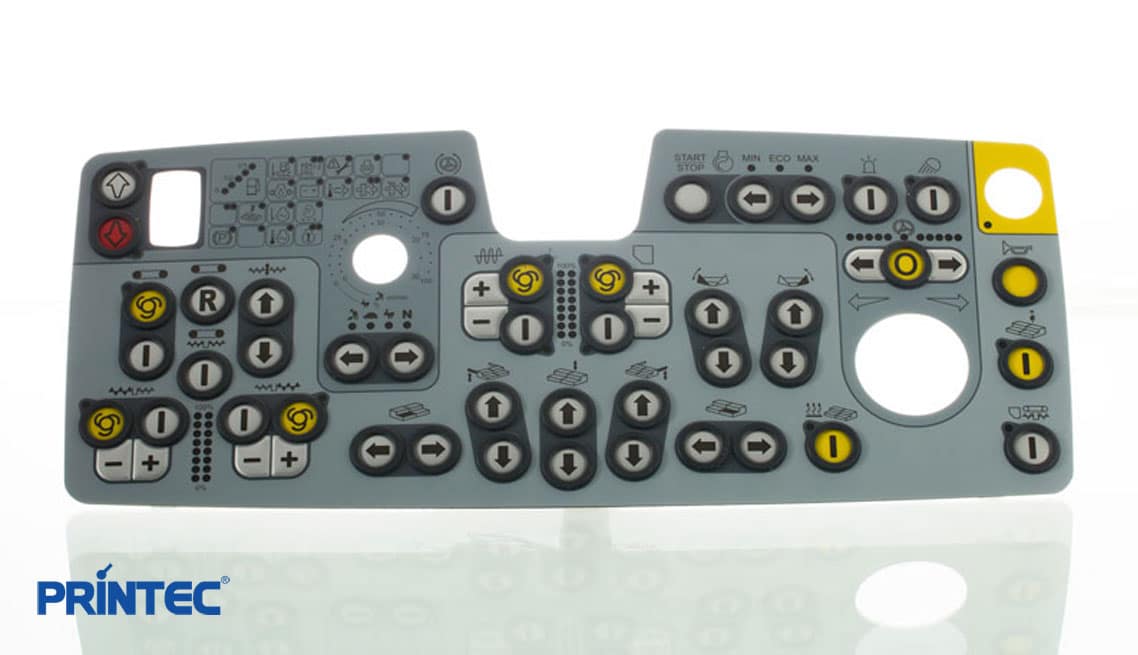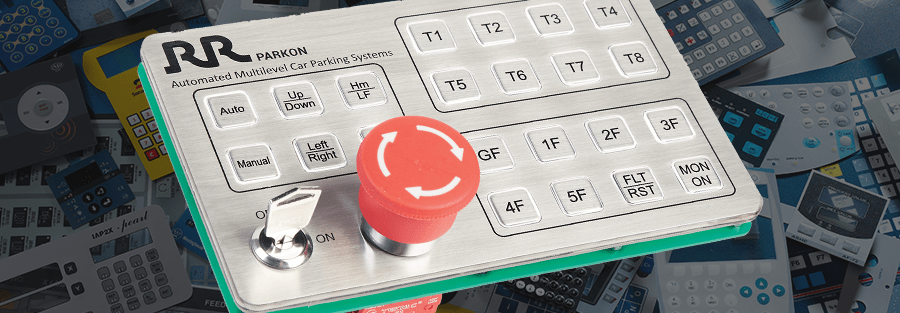Discover the Future of Control Interfaces: Why Membrane Switches Are Acquiring Popularity
As sectors progressively focus on easy to use and effective control user interfaces, membrane buttons are emerging as a compelling service that combines capability with design versatility. With the increase of clever technology and sustainability issues, the capacities and technologies surrounding membrane changes warrant more detailed exam.
Understanding Membrane Switches
Membrane buttons are indispensable components in modern electronic devices, working as interfaces between users and devices. These switches are composed of multiple layers, commonly consisting of a visuals overlay, a spacer layer, and a circuit layer. When a customer presses a switch on the overlay, the top layer reaches the circuit layer, completing a circuit and sending a signal to the device. This easy yet effective mechanism enables smooth communication with innovation.

Durability is an additional essential feature, as membrane layer switches can be created to resist ecological factors such as moisture, dirt, and chemicals. This resilience makes them suitable for applications in severe problems. Overall, comprehending the framework and function of membrane layer switches is important for valuing their role in the evolution of customer interfaces in today's technology-driven globe.
Key Benefits of Membrane Layer Switches
Providing an array of benefits, membrane buttons have actually become a favored selection in various applications (Membrane Switches). One of the main advantages is their small style, making it possible for producers to enhance room in devices without compromising performance. Membrane layer switches are lightweight, which is particularly beneficial in portable electronic devices

Additionally, these switches provide outstanding resilience. Created from adaptable products, they are immune to dirt, moisture, and a variety of environmental elements, making them ideal for extreme conditions. This durability frequently translates into a longer lifespan contrasted to typical mechanical buttons.
Moreover, membrane switches permit seamless assimilation of graphics and icons, using visual versatility and enhancing user experience. Personalization alternatives are extensive, making it possible for brand names to produce distinct interfaces that straighten with their item identification.
The level surface of membrane layer switches stops the accumulation of dirt and crud, making them optimal for sanitary environments. Membrane layer buttons are affordable, as they can be generated in high volumes at reduced prices, making them available for a vast range of markets.
Applications Throughout Industries

A myriad of markets are significantly adopting membrane layer buttons because of their convenience and functionality. These manage user interfaces are particularly common in the vehicle market, where they are utilized in dashboards and infomercial systems, supplying a straightforward and sleek user interface. In the clinical area, membrane changes assist in the procedure of diagnostic equipment and client surveillance systems, ensuring reliability and simplicity of use in crucial circumstances.
Furthermore, the customer electronic devices sector benefits from membrane switches in devices such as microwaves and remote controls, enabling streamlined style and boosted durability. Membrane Switches. The aerospace sector also utilizes membrane switches in cockpit controls, where space constraints demand reliable and portable layout you can try here remedies
In addition, the find commercial field uses membrane layer buttons in machinery control panels, providing resilience versus rough settings and making certain functional effectiveness. Retail atmospheres have actually accepted membrane layer switches in point-of-sale systems, enhancing customer communication while preserving aesthetic appeal.
Layout Fads in Membrane Switches
Evolving along with technical developments, style trends in membrane layer switches are increasingly concentrated on boosting individual experience and aesthetic allure. Modern membrane buttons are being created for simplicity and instinctive usage, allowing customers to browse interfaces easily. This shift in the direction of user-centric style emphasizes responsive feedback, ensuring that customers receive prompt confirmation of their activities.
Furthermore, customizable graphics and shades are becoming typical functions in membrane switch layouts. This versatility permits makers to create individualized interfaces that line up with branding and specific individual needs. The consolidation of backlighting is another popular fad, as it not only boosts visibility in low-light conditions yet also includes an aesthetically striking element to the general design.
Additionally, the fad towards lightweight and thin products is gaining traction, enabling for sleeker layouts that can perfectly incorporate right into numerous applications. This shift not only boosts aesthetic appeals yet also contributes to the general capability and resilience of the switches. Environment-friendly products are significantly being made use of, mirroring a broader movement towards sustainability in product style. These style patterns jointly highlight the expanding value of incorporating kind and feature in the advancement of membrane layer buttons, eventually improving the individual experience.
Future Overview for Control Interfaces
The future of control interfaces is positioned for substantial improvement as arising technologies proceed to reshape customer communications throughout different devices. The integration of innovative materials, such as flexible electronic devices and conductive inks, will enhance the adaptability and capability of membrane layer buttons, making them significantly versatile to a variety of applications. Additionally, the rise of the Web of Points (IoT) will drive demand for even more instinctive, straightforward interfaces that can seamlessly incorporate with wise tools.
As synthetic intelligence and artificial intelligence develop, regulate interfaces will likely include more personalized functions, permitting individuals to interact with gadgets in visit their website manner ins which are tailored to their behaviors and preferences (Membrane Switches). This change towards user-centric style will certainly position membrane layer buttons as a principal on the market, specifically in industries like medical care, automotive, and consumer electronic devices
Additionally, the press for sustainability will certainly encourage producers to check out environmentally friendly materials and production techniques, making certain that the future of control user interfaces aligns with environmental considerations. Generally, as modern technology continues to advance, membrane switches will become progressively advanced, paving the method for ingenious control options that boost customer experience and functional performance throughout varied sectors.
Verdict
In verdict, the boosting adoption of membrane layer changes highlights their significance in the advancement of control interfaces. As straightforward user interfaces become crucial in the context of IoT and AI improvements, membrane buttons are positioned to play a crucial function.
As industries significantly prioritize reliable and user-friendly control user interfaces, membrane buttons are emerging as an engaging service that combines performance with layout versatility.Durability is one more vital function, as membrane layer switches can be created to stand up to environmental variables such as moisture, dirt, and chemicals.Evolving together with technical advancements, style fads in membrane switches are progressively concentrated on enhancing individual experience and visual allure. Modern membrane layer buttons are being designed for simplicity and instinctive usage, allowing individuals to browse user interfaces effortlessly. These design patterns jointly emphasize the expanding significance of incorporating kind and function in the development of membrane switches, eventually improving the customer experience.